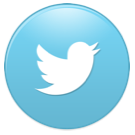Yeast Infection
Yeast infection (also known as thrush or candidiasis) is a fungal infection most often caused by candida albicans. This fungus is always present on our skin. Antibiotics may cause microorganism imbalance and result in fungus overgrowth. It may also be caused by low iron level.
Women who had vaginal candidiasis are more prone to nipple yeast infection. It can be passed on to the baby during birth. From baby’s mouth through cracked nipples yeast can penetrate mom’s breast.
Make sure before the delivery that you treat the vaginal candidiasis (this link will open a new window and take you to an excellent yeast infection resource).
How Do I Know It Is Yeast?
- During candidiasis nipples may look flaky, shiny, reddened and be itchy, burning, and irritable. Sometimes areola also gets affected. In rare cases red bumps appear on the nipples.
- In many cases, however, nipples look normal. If you have other symptoms, try to remember if you had any recent nipple traumas or sores. Fungus may have penetrated the nipple during that time.
- Pain is spreading from the nipple deep into the breast tissue during and after feeding. The pain comes and goes. There are periods of comfortable pain-free nursing.
- Your baby’s mouth thrush is characterized by white patches on the tongue, the inside of the cheeks and lips, gums, and back of the throat. Infection may also spread to the baby’s anal area and cause yeast diaper rash.
- Breastfeeding thrush is often confused with milk residue. Try removing the white from your baby’s tongue with a cotton swab. Milk residue comes off easily. Thrush doesn’t. Be gentle. If you force thrush patch to come off, it will bleed.
- Yeast diaper rash is of bright red color with tiny red bumps.
- If your baby suddenly starts crying during feeding, check his/her mouth for mouth thrush.
Before Infection
Fungus thrives on moisture. Keep your breasts clean and dry at all times. If you are using pads for leaking breasts, change them frequently. Avoid using plastic and silicone pads. These lock in moisture and create perfect conditions for yeast infection.
If you are using breast shield (shell) to correct flat or inverted nipples, it may also keep your breasts moist and facilitate fungus growth. Expose your breasts and your baby’s bottom to air as much as possible.
Yogurt contains good bacteria. You and your baby should include yogurt in your diet after a course of antibiotics to increase yeast resistance.
During Infection
If you suspect you have nipple candidiasis, talk to your OBGYN and your baby’s pediatrician. If your baby doesn’t have thrush or yeast diaper rash yet, you need to treat your infection as soon as possible to prevent spreading. If your baby shows signs of infection, both of you need to be treated.
If you suspect yeast infection, use the following home remedy. Dissolve a teaspoon of baking soda in a cup of boiled (not boiling hot) water. Moisten a cotton swab in this solution and wipe gently the insides of your baby’s mouth. Repeat as often as you can. Shake the solution before every use.
If your baby’s mouth is the only place infected, using this home remedy and keeping your breasts and baby’s bottom dry and clean may completely relief the condition.
If infection persists, try applying gentian violet. It is an antifungal and antibacterial over-the-counter treatment. Dilute it to half strength. Make sure it doesn’t contain alcohol. Try it once a day for up to one week. Do not apply to open wounds. If condition persists, get a prescription antifungal treatment from your doctor.
Prescription treatment usually consists of a topical antifungal cream (for vaginal, nipple, diaper rash yeast) and oral medications (for thrush). Nystatin is the most common component of all topical and oral antifungal treatments. Diflucan is the most common oral medicine.
In some cases your doctor may prescribe both oral and topical treatments simultaneously to prevent re-infecting.
Your doctor may recommend an ointment combining a steroid (to reduce skin inflammation), an antibiotic (in case yeast was mistaken for bacterial infection) and an antifungal component.
Finish the entire course of medications as prescribed even if condition improves. It prevents recurrence.
Start your baby on probiotics (if age appropriate). They contain good bacteria that improve overall candida albicans resistance.
If your baby has thrush, be aware of the pain he/she experiences while nursing. Be gentle and patient.
If your baby is eating regular food, try giving him/her more pureed or smashed foods to ease the pain.
Boil pacifiers, bottle nipples, bottles, breast pump accessories every day to prevent re-infecting.
Continue breastfeeding. If it is too painful, pump or hand express to maintain milk supply.
If condition persists after the treatment, check other family members for symptoms. Men can also have yeast infection, but show no signs. Your doctor may suggest treatment for the entire family.
If after that the condition persists, it may not be fungal infection after all. Bacterial infection (staphylococcus) may have similar symptoms. It may be accompanied by drainage from the nipple. Bacterial infection requires antibiotics.
Yeast infection is an unpleasant condition for you and your baby. Breastfeeding mom’s candidiasis usually means candidiasis in babies too, and vice versa. Don’t blame breastfeeding though! It happens in many bottle-fed babies. Taking measures to prevent recurrence and affective treatment won’t let this infection jeopardize breastfeeding.
There are many ways to show your love and devotion to your kids and to win their trust. Breastfeeding is the most natural one.
Yours,
Viktoriya
Home › Breastfeeding Problems › Yeast Infection










